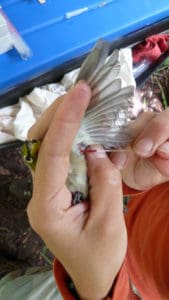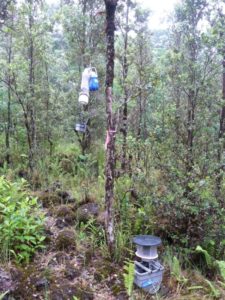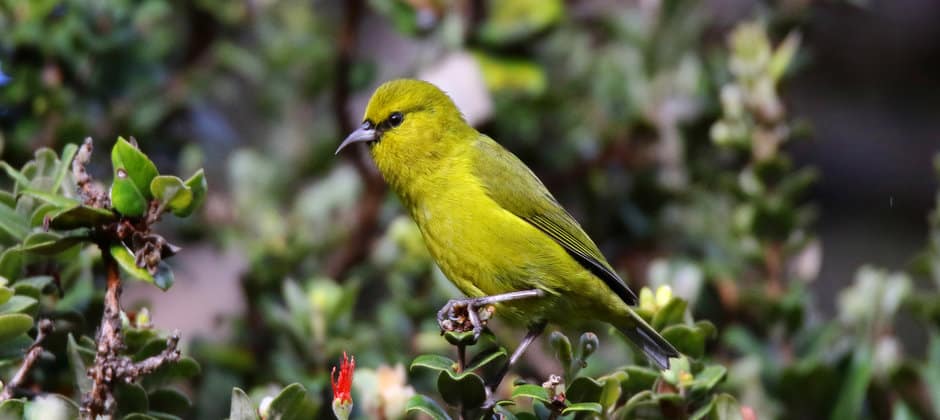Share this article
Hawaiian honeycreepers can resist avian malaria
Some native honeycreeper species may be able to survive avian malaria in Hawaii — but this resistance may mean they are allowing the disease to persist and pass on to more vulnerable species.
“Curiously, some native bird species could be impeding the recovery of other native species just because of the fact that they are acting as reservoirs of disease,” said Katherine McClure, a postdoctoral bird researcher at Cornell University and the lead author of a study published recently in Ecology.
Avian malaria was likely introduced in Hawaii by the 1940s. Since then, the mosquito-borne parasite has cut a swath through native bird species like the endangered kiwikiu (Pseudonestor xanthophrys) on Maui and many species of native honeycreepers like the endangered akikiki (Oreomystis bairdi) and ‘akeke‘e (Loxops caeruleirostris) on Kauai, which are on the verge of extinction. Many native Hawaiian birds have no natural resistance to the introduced disease, but introduced birds can often survive it and serve as a source of infection for mosquitos, transmitting malaria to less-resistant native species.

Katherine McClure extracts a blood sample from a Japanese white-eye (Zosterops japonicus), an introduced species in Hawaii.
Credit: Katherine McClure
McClure said this has led to restructuring of bird communities across the islands. Populations of native birds that die at high rates when infected with malaria now persist only in higher elevations free of the mosquitoes, while the introduced species often take over the lower elevation areas.
On the main island of Hawaii, only two native honeycreepers have managed to persist in eastern low elevation forests: the ʻamakihi (Chlorodrepanis virens) and the ʻapapane (Himatione sanguinea).
McClure and her co-authors took a closer look at how species composition in these forests impacted the spread of malaria. From 2011 through 2013, they surveyed species composition at a number of different sites during the summer by trapping birds in mist nets. Some sites were mostly made up of introduced birds, some had a mix native honeycreepers and introduced birds.
The researchers also trapped mosquitos in these areas to get a sense of their population abundance. Lab analysis revealed how many of the insects carried the malaria parasite, and blood samples from captured birds showed whether the birds carried the disease.
After combining the data, the researchers learned more about disease transmission in the area. They found that that the denser the mosquito populations, the less dense the native birds. But the prevalence of mosquito infection increased with the density of native honeycreepers.

Two types of mosquito traps were used to determine the abundance of the malaria-carrying insects.
Credit: Katherine McClure
“Native Hawaiian birds … likely increase the transmission of avian malaria,” McClure said.
She and her colleagues ran a demographic model and found that the population of ʻamakihi would continue to grow, even if 100% of the birds were infected as juveniles.
The study is at least good news for these ʻamakihi, which may also survive in these areas partly because of their generalist diets as well as their tolerance or resistance to malaria.
McClure said this study is important for bird management on the island, since conservationists have considered a number of strategies to control the spread of malaria. Techniques like removing introduced birds that may transmit malaria to native birds may not be effective in all areas, since the Hawaiian honeycreepers seem to also act as reservoirs for the disease.
Header Image: Honeycreepers like the Hawaii ʻamakihi may be more resistant to avian malaria than their native counterparts. Credit: Ann Tanimoto-Johnson








